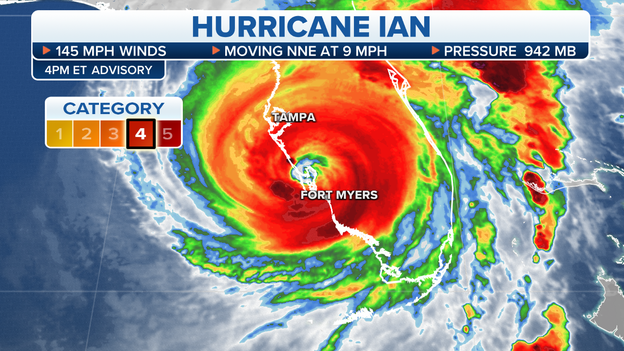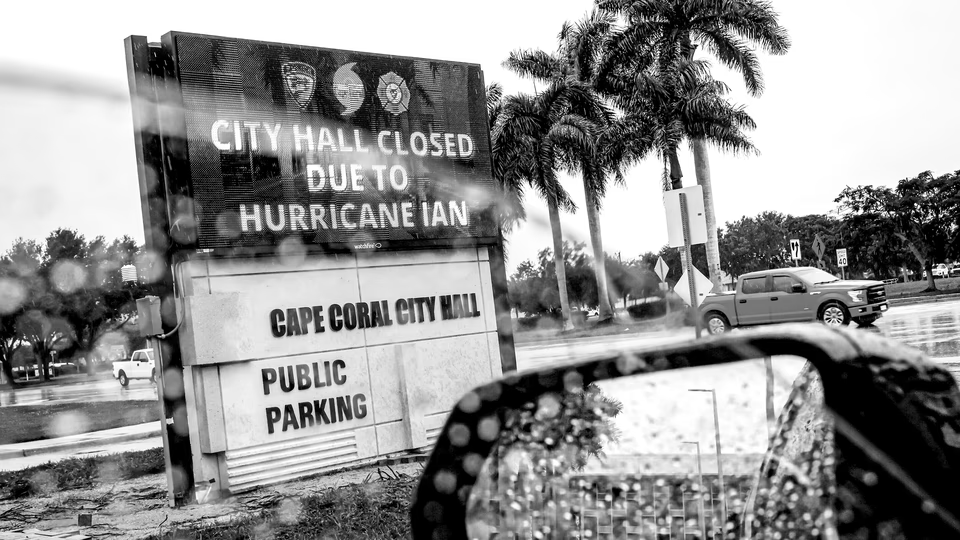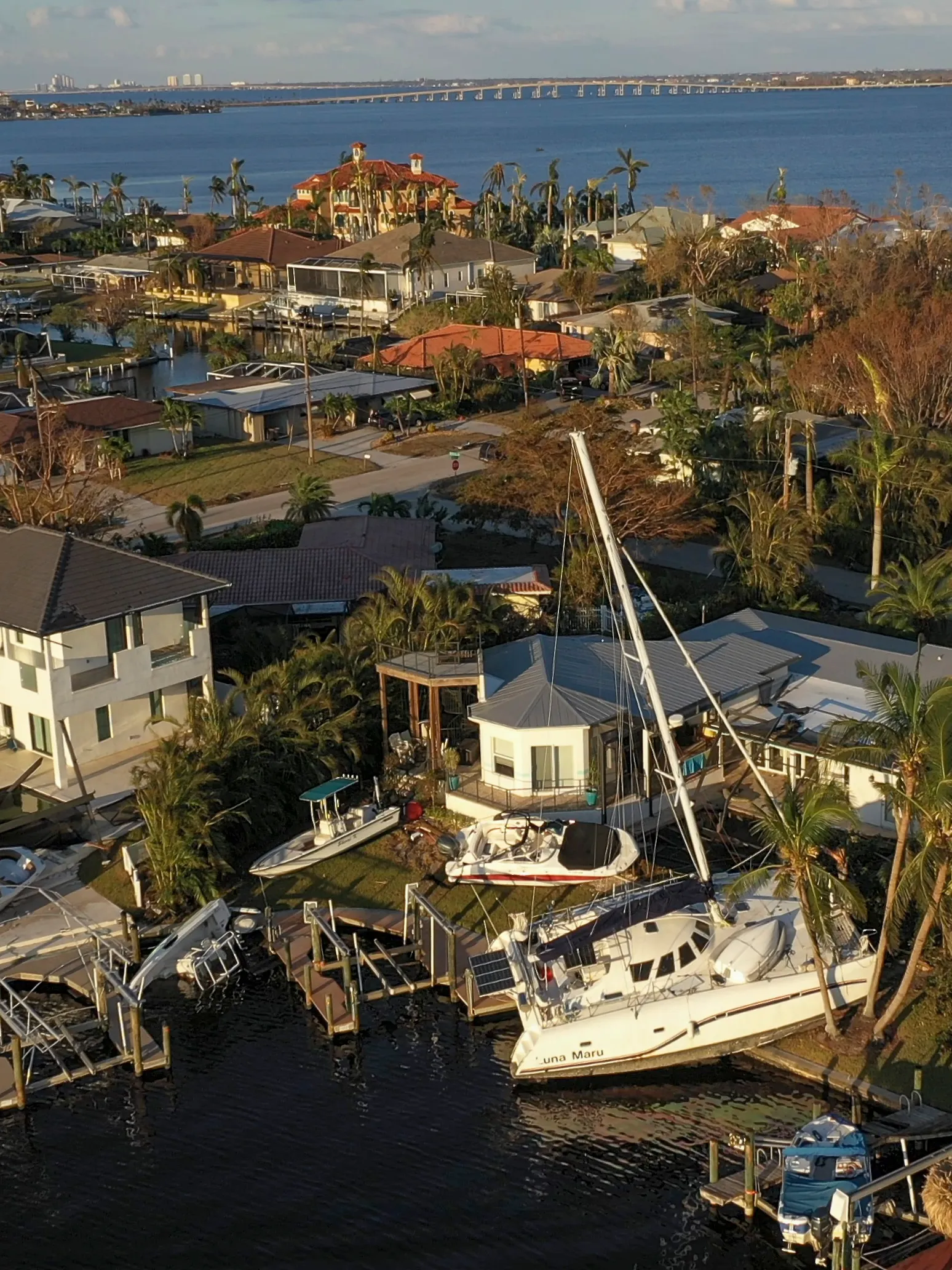Where’s the Ian Money? Cape Coral Deserves Answers
- Tom Shadrach

- Jul 30
- 4 min read
Updated: Aug 24
Cape Coral's Hurricane Ian Reimbursement Raises Big Questions About Transparency and Reserves
The City of Cape Coral has repeatedly touted that it spent $88 million on disaster recovery efforts following Hurricane Ian, using this as justification for maintaining high reserve funds. But here’s the catch: Lee County, including Cape Coral, was declared a federal disaster area, qualifying the city for both federal and state aid.
Under disaster aid laws, the Federal Emergency Management Agency (FEMA) typically reimburses up to 75% of costs, with the state covering an additional 12.5%. But due to the immense scale of Hurricane Ian, the State of Florida stepped up and covered the remaining 12.5%, meaning Cape Coral was reimbursed for 100% of its disaster costs.
Furthermore, the Governor offered the city a $100 million interest-free loan to bridge the gap while waiting for those reimbursements. So, while the use of reserves was briefly necessary, those funds should have been fully replenished once reimbursements were received.
This reimbursement structure not only covers physical recovery but also allows the city to recoup costs related to staffing and interrupted operations across multiple fiscal years. In fact, the city has previously done this. For instance, during COVID and Hurricane Irma recovery, Cape Coral received $12.8 million in reimbursements. Rather than use that windfall to offer tax relief to residents, those funds were instead diverted to cover cost overruns on the Parks GO Bond projects.
Now, we are learning that Cape Coral has been fully reimbursed for its Hurricane Ian expenses, yet there’s no clear accounting of where that money went. Based on the structure and timing, the city should have replenished between $5 million and $15 million in reserves. So where is that money?
The public deserves:
A complete, itemized accounting of Hurricane Ian-related expenses and reimbursements.
A real-time breakdown of all reserve fund balances, across all funds, not just the prior-year figures shown in the Annual Comprehensive Financial Report (ACFR), which doesn’t come out until May.
In the past, reserve balances were regularly disclosed during budget workshops and shown in city budgets. That practice has quietly disappeared. Citizens now have no visibility into current reserve levels, and transparency is increasingly elusive.
Built on Your Back: The City’s Hidden Reserve Plan
The attached chart below was originally presented by Mark Mason (aka the great money hider) during the 2023 budget workshop. The yellow notes are my own. As shown, the clear intent was to build a $29.3 million reserve by 2027, and they’re almost there. This reserve was never meant for debris cleanup; it was designed to gradually increase rates in anticipation of a potential price hike. It sounds unbelievable, but they pulled it off. Now, they’re trying to justify it by pointing to debris cleanup, but both the Mayor and City Manager know that’s not the real story.
The City’s $26.5 Million Trash Scam
For the past few years, the City Manager and Council have quietly been running a scheme on taxpayers using fear of future cost hikes to justify steadily increasing your Solid Waste Assessment. Their excuse? They claim the Waste Pro contract will be more expensive when it expires in 2027.

Rate Shock: The One Thing Cape Coral Delivers Consistently
One Council Member Stood Alone. The Others Stood With The City’s Wallet
But here’s the truth: taxpayers have already been overcharged by $16.1 million, and with last week’s 7-1 vote (only Rachel Kaduk opposed), another $10.4 million will be added bringing the reserve to $26.5 million by next fiscal year.
Their cover story? They say the money is needed for debris cleanup in case of another major hurricane. But Solid Waste is a basic city service—not a disaster fund—and doesn't need a bloated reserve.
If the Council simply stopped padding this fund, your Solid Waste bill could drop by $104, lowering it to $280.25 instead of the newly approved $384.25. And even then, the reserve would still sit at a fat $16.5 million—money that should be returned to residents, not hoarded by the city.
The Transparency Illusion
While the council did direct the City Manager to publish some actuals monthly, hoping to follow the example of Lee County, that request has gone ignored. Where are the mayor and council members demanding accountability?
It’s hard not to conclude that keeping the public in the dark serves a purpose to quietly funnel surplus dollars into pet projects like Jaycee Park, Bimini East, and scope increases to others.
It’s time for full transparency and honest stewardship of taxpayer funds. This situation underscores the growing call for the State’s Office of the Chief Inspector General (DOGE team) to conduct an audit of Cape Coral’s financial practices.
You can watch the whole section of the video HERE!
You can watch the entire Regular Meeting from Wednesday, July 23, 2025 HERE!
All information has been thoroughly investigated and reported by the Take Out the Trash Committee of Cape Coral and/or its authorized volunteers!












